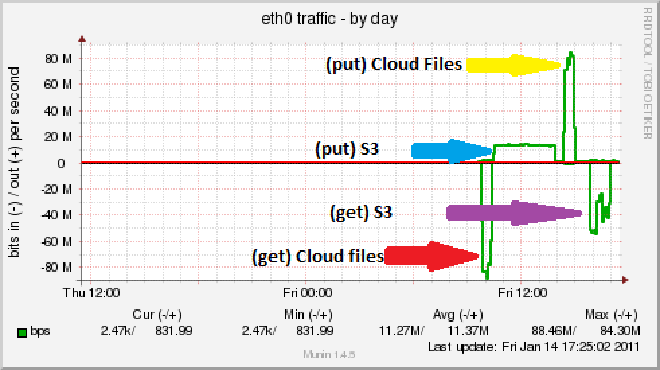Google Authenticator F5 IRule
Two Factor authentication is rather hit and miss in terms of support from web apps.
A quick look around the web turns up an article on DevCentral for a solution to implement google authentication with ldap. As I don’t run a LDAP server at home I needed to hack up the script a bit. This iRule implements the two factor side of things from the above article, but skips the LDAP side of things, as it’s not needed!
when RULE_INIT {
# auth parameters
set static::auth_cookie "bigip_virtual_auth"
set static::auth_cookie_aes_key "AES 128 abcdef0123456789abcdef0123456789"
set static::auth_timeout 86400
set static::auth_lifetime 86400
# name of datagroup that holds AD user to Google Authenticator mappings
set static::user_to_google_auth_class "user_to_google_auth"
# lock the user out after x attempts for a period of x seconds
set static::lockout_attempts 3
set static::lockout_period 30
# 0 - logging off
# 1 - log only successes, failures, and lockouts
# 2 - log every attempt to access virtual as well as authentication process details
set static::debug 1
# HTML for login page
set static::login_page {
<div align="center">
<div align="center" style="border:1px solid;width:300px">
<h2>Authorization Required</h2>
<form method="POST">
user: <br></br>
Google Authenticator code:
</form>
</div>
</div>
}
}
when CLIENT_ACCEPTED {
# per virtual status tables for lockouts and users' auth_status
set lockout_state_table "[virtual name]_lockout_status"
set auth_status_table "[virtual name]_auth_status"
set authid_to_user_table "[virtual name]_authid_to_user"
# record client IP, [IP::client_addr] not available in AUTH_RESULT
set user_ip [IP::client_addr]
# set initial values for auth_id and auth_status
set auth_id [md5 [expr rand()]]
set auth_status 2
set auth_req 1
}
when HTTP_REQUEST {
if { $auth_req == 1 } {
# track original URI user requested prior to login redirect
set orig_uri [b64encode [HTTP::uri]]
if { [HTTP::cookie exists $static::auth_cookie] && !([HTTP::path] starts_with "/google/auth/login")} {
set auth_id_current [AES::decrypt $static::auth_cookie_aes_key [b64decode [HTTP::cookie value $static::auth_cookie]]]
set auth_status [table lookup -notouch -subtable $auth_status_table $auth_id_current]
set user [table lookup -notouch -subtable $authid_to_user_table $auth_id_current]
if { $auth_status == 0 } {
if { $static::debug >= 2 } { log local0. "$user ($user_ip): Found valid auth cookie (auth_id=$auth_id_current), passing request through" }
} else {
if { $static::debug >= 2 } { log local0. "Found invalid auth cookie (auth_id=$auth_id_current), redirecting to login"}
HTTP::redirect "/google/auth/login?orig_uri=$orig_uri"
}
} elseif { ([HTTP::path] starts_with "/google/auth/login") && ([HTTP::method] eq "GET") } {
HTTP::respond 200 content $static::login_page
} elseif { ([HTTP::path] starts_with "/google/auth/login") && ([HTTP::method] eq "POST") } {
set orig_uri [b64decode [URI::query [HTTP::uri] "orig_uri"]]
HTTP::collect [HTTP::header Content-Length]
} else {
if { $static::debug >= 2 } { log local0. "Request for [HTTP::uri] from unauthenticated client ($user_ip), redirecting to login" }
HTTP::redirect "/google/auth/login?orig_uri=$orig_uri"
}
}
}
when HTTP_REQUEST_DATA {
if { $auth_req == 1} {
set user ""
set ga_code ""
foreach param [split [HTTP::payload] &] {
set [lindex [split $param =] 0] [lindex [split $param =] 1]
}
if { ($user ne "") && ([string length $ga_code] == 6) } {
set ga_code_b32 [class lookup $user $static::user_to_google_auth_class]
set prev_attempts [table incr -notouch -subtable $lockout_state_table $user]
table timeout -subtable $lockout_state_table $user $static::lockout_period
if { $prev_attempts = 2 } { log local0. "$user ($user_ip): Starting authentication sequence, attempt #$prev_attempts" }
# begin - Base32 decode to binary
# Base32 alphabet (see RFC 4648)
array set static::b32_alphabet {
A 0 B 1 C 2 D 3
E 4 F 5 G 6 H 7
I 8 J 9 K 10 L 11
M 12 N 13 O 14 P 15
Q 16 R 17 S 18 T 19
U 20 V 21 W 22 X 23
Y 24 Z 25 2 26 3 27
4 28 5 29 6 30 7 31
}
set l [string length $ga_code_b32]
set n 0
set j 0
set ga_code_bin ""
for { set i 0 } { $i < $l } { incr i } {
set n [expr $n <= 8 } {
set j [incr j -8]
append ga_code_bin [format %c [expr ($n & (0xFF <> $j]]
}
}
# end - Base32 decode to binary
# begin - HMAC-SHA1 calculation of Google Auth token
set time [binary format W* [expr [clock seconds] / 30]]
set ipad ""
set opad ""
for { set j 0 } { $j < [string length $ga_code_bin] } { incr j } {
binary scan $ga_code_bin @${j}H2 k
set o [expr 0x$k ^ 0x5C]
set i [expr 0x$k ^ 0x36]
append ipad [format %c $i]
append opad [format %c $o]
}
while { $j < 64 } {
append ipad 6
append opad \
incr j
}
binary scan [sha1 $opad[sha1 ${ipad}${time}]] H* token
# end - HMAC-SHA1 calculation of Google Auth hex token
# begin - extract code from Google Auth hex token
set offset [expr ([scan [string index $token end] %x] & 0x0F) <= 2 } { log local0. "$user ($user_ip): Google Authenticator TOTP token matched" }
set auth_status 0
set auth_id_aes [b64encode [AES::encrypt $static::auth_cookie_aes_key $auth_id]]
table add -subtable $auth_status_table $auth_id $auth_status $static::auth_timeout $static::auth_lifetime
table add -subtable $authid_to_user_table $auth_id $user $static::auth_timeout $static::auth_lifetime
if { $static::debug >= 1 } { log local0. "$user ($user_ip): authentication successful (auth_id=$auth_id), redirecting to $orig_uri" }
HTTP::respond 302 "Location" $orig_uri "Set-Cookie" "$static::auth_cookie=$auth_id_aes;"
HTTP::collect
} else {
if { $static::debug >= 1 } { log local0. "$user ($user_ip): authentication failed - Google Authenticator TOTP token not matched" }
HTTP::respond 200 content $static::login_page
}
} else {
if { $static::debug >= 1 } { log local0. "$user ($user_ip): could not find valid Google Authenticator secret for $user" }
HTTP::respond 200 content $static::login_page
}
} else {
if { $static::debug >= 1 } { log local0. "$user ($user_ip): attempting authentication too frequently, locking out for ${static::lockout_period}s" }
HTTP::respond 200 content "You've made too many attempts too quickly. Please wait $static::lockout_period seconds and try again."
}
} else {
HTTP::respond 200 content $static::login_page
}
}
}
